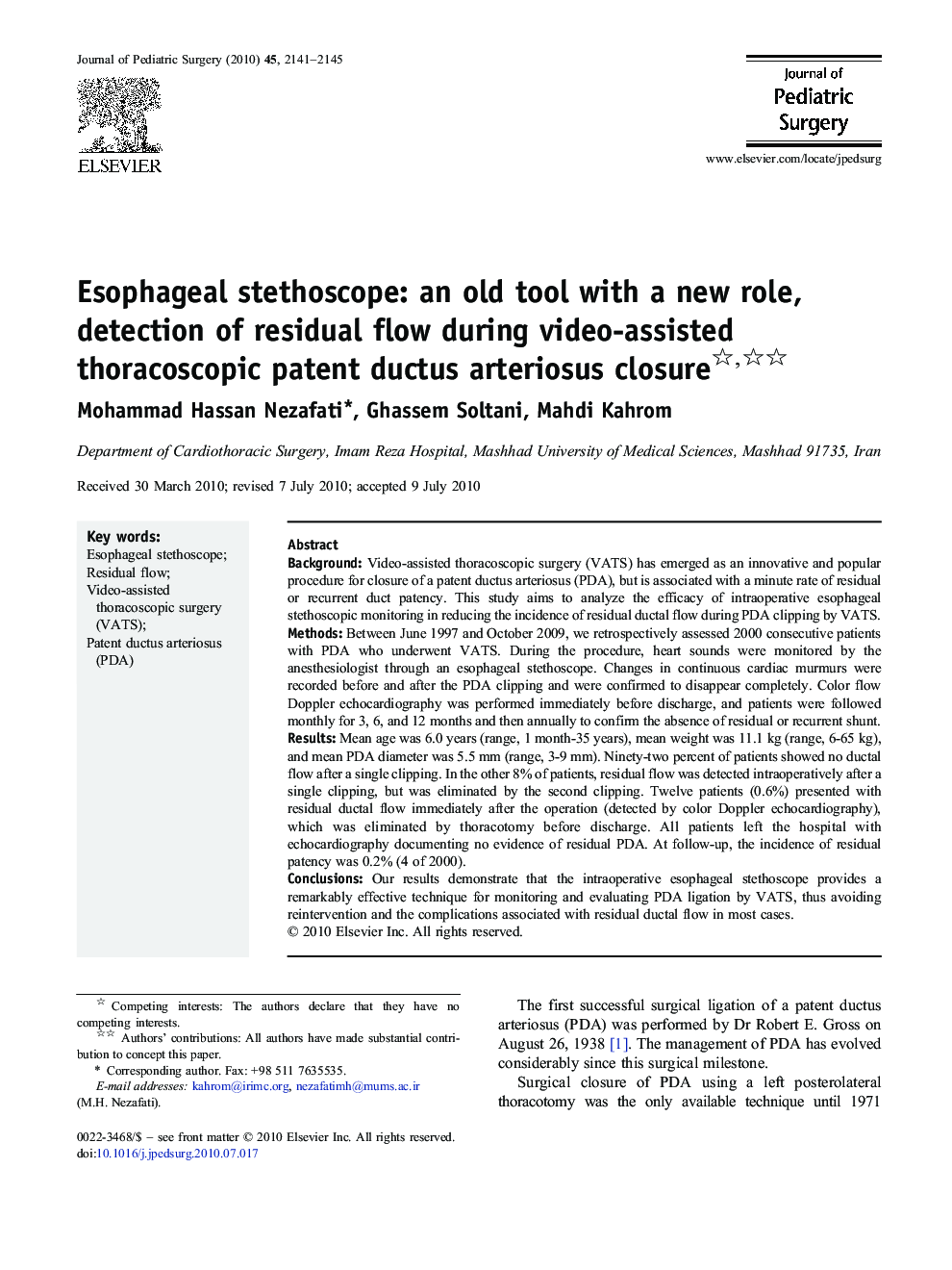| کد مقاله | کد نشریه | سال انتشار | مقاله انگلیسی | نسخه تمام متن |
|---|---|---|---|---|
| 4157300 | 1273790 | 2010 | 5 صفحه PDF | دانلود رایگان |

BackgroundVideo-assisted thoracoscopic surgery (VATS) has emerged as an innovative and popular procedure for closure of a patent ductus arteriosus (PDA), but is associated with a minute rate of residual or recurrent duct patency. This study aims to analyze the efficacy of intraoperative esophageal stethoscopic monitoring in reducing the incidence of residual ductal flow during PDA clipping by VATS.MethodsBetween June 1997 and October 2009, we retrospectively assessed 2000 consecutive patients with PDA who underwent VATS. During the procedure, heart sounds were monitored by the anesthesiologist through an esophageal stethoscope. Changes in continuous cardiac murmurs were recorded before and after the PDA clipping and were confirmed to disappear completely. Color flow Doppler echocardiography was performed immediately before discharge, and patients were followed monthly for 3, 6, and 12 months and then annually to confirm the absence of residual or recurrent shunt.ResultsMean age was 6.0 years (range, 1 month-35 years), mean weight was 11.1 kg (range, 6-65 kg), and mean PDA diameter was 5.5 mm (range, 3-9 mm). Ninety-two percent of patients showed no ductal flow after a single clipping. In the other 8% of patients, residual flow was detected intraoperatively after a single clipping, but was eliminated by the second clipping. Twelve patients (0.6%) presented with residual ductal flow immediately after the operation (detected by color Doppler echocardiography), which was eliminated by thoracotomy before discharge. All patients left the hospital with echocardiography documenting no evidence of residual PDA. At follow-up, the incidence of residual patency was 0.2% (4 of 2000).ConclusionsOur results demonstrate that the intraoperative esophageal stethoscope provides a remarkably effective technique for monitoring and evaluating PDA ligation by VATS, thus avoiding reintervention and the complications associated with residual ductal flow in most cases.
Journal: Journal of Pediatric Surgery - Volume 45, Issue 11, November 2010, Pages 2141–2145